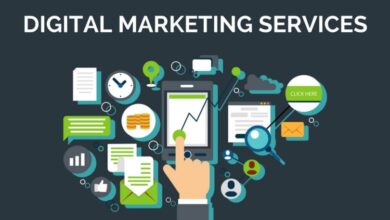The Significance of Technology Services in Modern Business
The Significance of Technology Services in Modern Business

The Significance of Technology Services in Modern Business
In today’s fast-paced and digitally-driven world, technology services have become the backbone of successful businesses. From optimizing operations to enhancing customer experiences, these services empower organizations to remain competitive in an ever-evolving landscape. But what exactly are technology services, and why are they so crucial?
Technology services encompass a wide range of solutions designed to address specific business needs, such as software development, IT infrastructure management, cybersecurity, and cloud computing. By leveraging these services, businesses can streamline their processes, reduce costs, and ensure their systems are secure and efficient.
This article delves into the various types of technology services, their benefits, and how companies can make the most of them to achieve sustainable growth.
Types of Technology Services
Technology services encompass a variety of solutions, each designed to address specific challenges and enhance business operations. Below are the key categories:
- Software Development
- Custom-built software and applications tailored to meet business needs.
- Examples: Mobile apps, enterprise software, and cloud-based solutions.
- IT Infrastructure Management
- Managing and optimizing the hardware, software, and network systems that support business operations.
- Examples: Server management, data storage, and virtualization.
- Cybersecurity
- Protecting digital assets from threats, ensuring data integrity and system security.
- Examples: Firewalls, malware detection, and penetration testing.
- Cloud Computing
- Providing scalable and flexible solutions for data storage, collaboration, and IT resources.
- Examples: Cloud hosting, SaaS platforms, and cloud backups.
- IT Consulting
- Expert advice and strategic planning to maximize technology investments.
- Examples: Digital transformation strategies and IT performance assessments.
- Data Analytics
- Leveraging data to uncover insights and drive decision-making.
- Examples: Predictive analytics, business intelligence tools, and data mining.
- Tech Support
- Offering assistance and maintenance to ensure smooth operation of systems and applications.
- Examples: Helpdesk services and system troubleshooting.
Each of these services plays a vital role in helping businesses achieve efficiency, security, and scalability in today’s competitive environment.
Selecting the right technology service provider is a critical decision that can significantly impact your business’s success. Here’s a step-by-step guide to making the right choice:
- Understand Your Business Needs
- Clearly identify the specific challenges or goals you want the technology service to address.
- Examples: Improving cybersecurity, enhancing IT infrastructure, or adopting cloud solutions.
- Evaluate Their Expertise
- Look for providers with proven experience in your industry or in the specific services you require.
- Check portfolios, case studies, and certifications.
- Consider Scalability
- Ensure the provider can support your business’s growth and adapt to future needs.
- Examples: Offering flexible subscription models or modular solutions.
- Assess Security Measures
- Verify the provider’s commitment to data protection and compliance with relevant regulations.
- Examples: Use of encryption, regular security audits, and adherence to GDPR or similar standards.
- Check References and Reviews
- Speak with current or past clients to gauge satisfaction and reliability.
- Look for reviews on professional platforms or industry forums.
- Evaluate Cost and ROI
- Compare pricing models and ensure they align with your budget while offering clear value.
- Avoid choosing based on cost alone—prioritize quality and long-term benefits.
- Test Their Support Services
- Ensure the provider offers responsive and reliable customer support.
- Examples: 24/7 helplines, dedicated account managers, and comprehensive training.
- Look for Innovation
- Choose a provider that stays ahead of technological trends and offers innovative solutions.
- Examples: AI-driven analytics or cutting-edge cloud services.
By following these steps, businesses can partner with a technology service provider that aligns with their goals, enhances operations, and ensures long-term success.
Conclusion
In the digital age, technology services have become indispensable for businesses striving to stay competitive and efficient. From streamlining operations to enhancing security and driving innovation, these services empower organizations to achieve their goals and adapt to ever-changing market demands.
Understanding the types of technology services available and their benefits allows businesses to leverage them strategically. By choosing the right technology service provider, companies can unlock their full potential, ensuring scalability, reliability, and long-term success.
As technology continues to evolve, businesses that embrace these services will not only survive but thrive in the modern business landscape. Whether it’s cloud computing, cybersecurity, or advanced data analytics, investing in the right technology solutions is a step toward a brighter and more innovative future.





